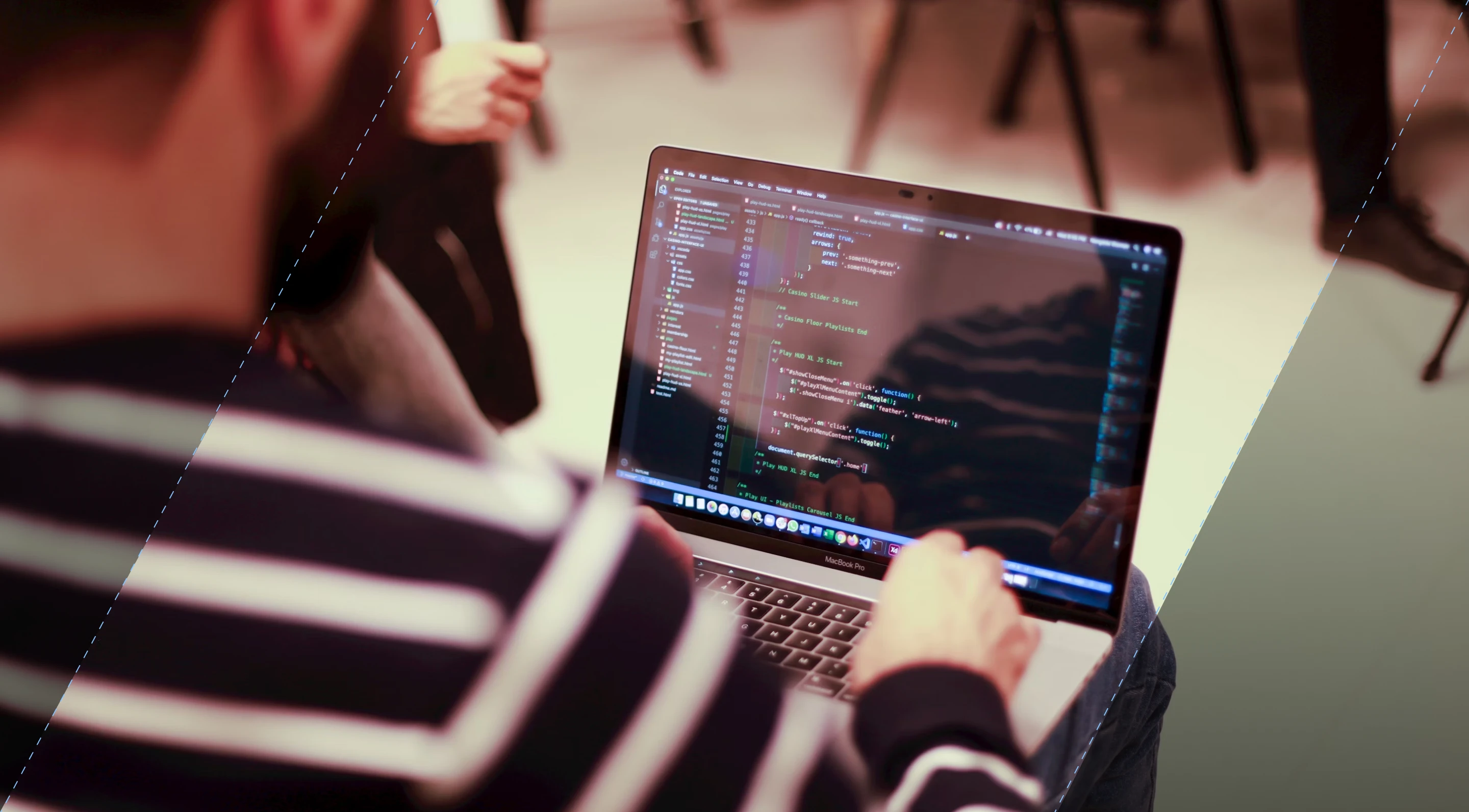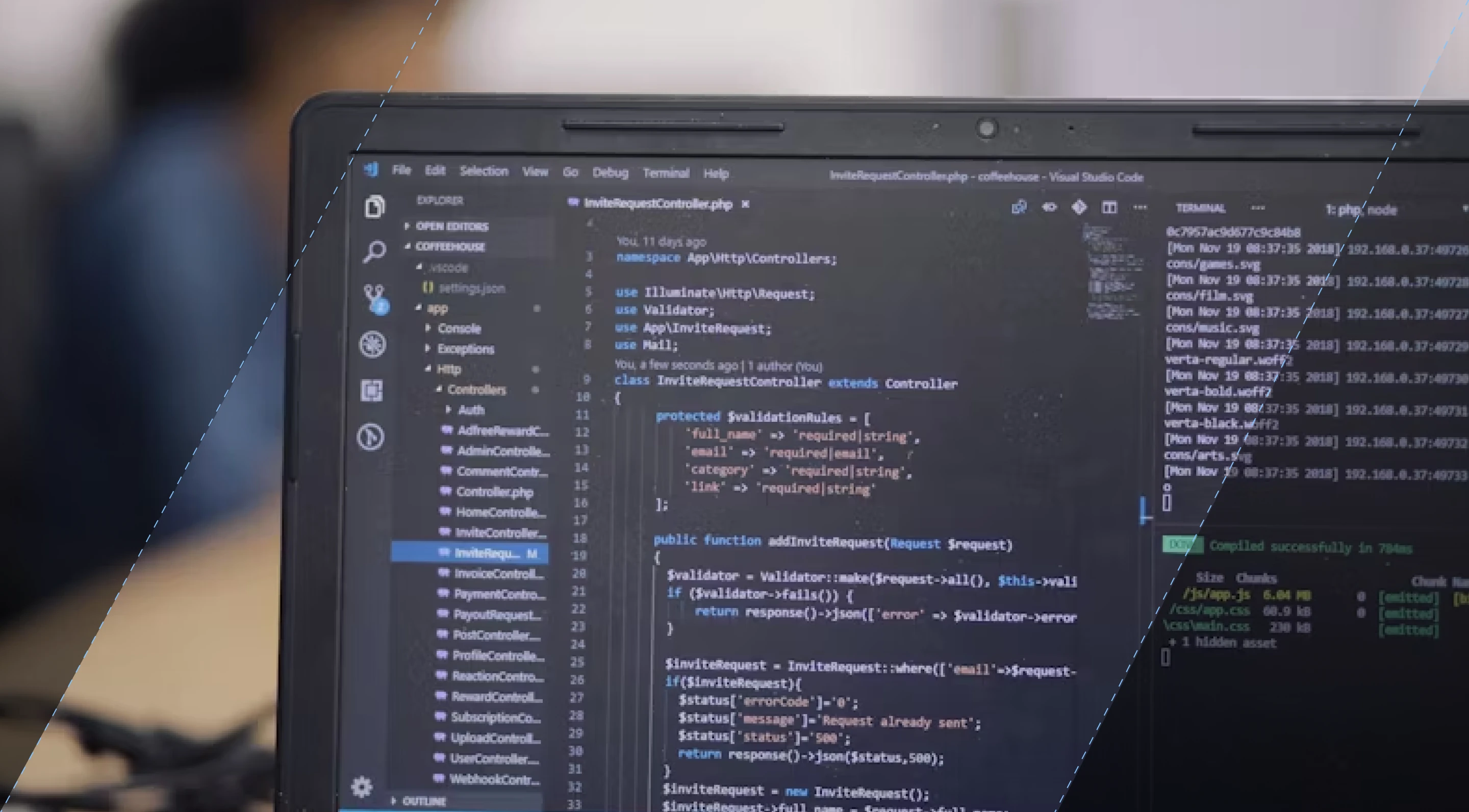SHARE
HMI Programming: The Ultimate Guide for Seamless Operations

Contents
Contents
In industrial automation, the human-machine interface (HMI) is essential for ensuring smooth operations and boosting productivity. HMI programming, the creation of intuitive software interfaces, is a critical skill for professionals in manufacturing, process control, and building automation.
Unplanned downtime costs industrial manufacturers an estimated $50 billion annually, making the industry a prime target for cybercriminals. In 2022, manufacturing faced the most extortion attempts, with attackers exploiting the industry’s low tolerance for work disruptions.
Securing HMIs is vital for protecting against cyber threats, as vulnerable HMIs can lead to unauthorized access and operational disruptions, risking productivity, data integrity, and safety.
In this guide, we’ll cover the fundamentals of HMI programming, essential security measures, and advanced techniques to optimize your HMI systems. By the end, you’ll be equipped with the knowledge to create robust, secure, and efficient HMI solutions.
Key Takeaways:
- HMI programming is critical for ensuring seamless operations and optimizing productivity in industrial automation.
- Unplanned downtime can cost industrial manufacturers billions of dollars, and HMI security is crucial to mitigate this risk.
- Passwords can be a significant vulnerability, and RFID logical access control can enhance HMI security by streamlining access control processes.
- Effective HMI programming requires a deep understanding of communication protocols, user interface design, and security best practices.
- Integrating HMIs with PLCs and SCADA systems can lead to improved efficiency, enhanced safety, and reduced operational costs.
Introduction to HMI Programming
As industrial automation continues to evolve, the importance of Human-Machine Interface (HMI) programming cannot be overstated.
With a predicted market size value of $10.8 billion by 2031, HMIs serve as the crucial link between operators and the complex machinery and processes that power modern manufacturing, process control, and building automation systems.
By understanding the fundamentals of HMI programming, you can unlock the full potential of your industrial automation technologies and drive greater efficiency, safety, and productivity across your organization.
What is HMI Programming?
HMI programming involves custom software development to provide a user-friendly interface for monitoring, controlling, and interacting with industrial equipment and processes.
This includes:
- Design and configuration of graphical screens
- Creation of animations
- Development of interactive elements
- Providing operators access to real-time data
- Enabling adjustments to be made easily
- Facilitating troubleshooting of issues with ease
HMI programming harnesses the power of programmable logic controllers (PLCs), supervisory control and data acquisition (SCADA) systems, and other industrial automation technologies to create a seamless, intuitive experience for human operators.
Importance of HMI Programming in Industrial Automation
HMI programming plays a pivotal role in ensuring the smooth and efficient operation of complex systems. By providing a user-friendly interface design, HMIs enable operators to monitor and control critical processes with greater precision and responsiveness.
This, in turn, leads to improved productivity, reduced downtime, and enhanced safety for workers and the overall production environment.
Benefits of HMI Programming
The benefits of effective HMI programming extend far beyond just user experience. Well-designed HMIs can also contribute to significant cost savings, improved data management, and enhanced compliance with regulatory standards.
Some of the key benefits of HMI programming include:
- Increased efficiency and productivity through streamlined operator interactions
- Enhanced safety by providing clear, real-time information and control capabilities
- Improved data acquisition and analysis for better decision-making
- Reduced maintenance and troubleshooting costs through intuitive interfaces
- Compliance with industry regulations and standards for process control and monitoring
By using HMI programming, industrial organizations can unlock a new level of operational excellence, driving greater competitiveness and long-term success in their respective markets.
Understanding Communication Protocols for HMI Programming
Communication protocols are the foundation for seamless data exchange between Programmable Logic Controllers (PLCs) and Human Machine Interfaces (HMIs) in industrial automation.
Understanding the capabilities and limitations of different protocols is crucial for optimizing HMI programming and ensuring efficient, reliable, and secure operations.
Modbus Protocol
Modbus is a widely adopted communication protocol in industrial automation. As an open-source protocol, Modbus uses a master-slave architecture for data transmission, making it popular for fieldbus applications.
It leverages a serial connection to enable reliable data exchange between PLCs, HMIs, and other industrial devices, offering a robust and cost-effective solution for automation needs.
Ethernet/IP Protocol
Ethernet/IP is an industrial Ethernet protocol that excels in PLC-HMI integration. It provides real-time data exchange capabilities, facilitating seamless communication between a wide range of industrial devices.
Its compatibility with numerous automation systems makes Ethernet/IP a versatile choice for ensuring smooth integration and enhanced productivity in industrial operations.
OPC Protocol
OPC (Open Platform Communications) is a protocol that standardizes data exchange between various industrial automation devices, including PLCs and HMIs.
This protocol-agnostic solution allows devices from different manufacturers to interact seamlessly, promoting greater interoperability and flexibility in your industrial automation ecosystem.
Key Considerations for Successful HMI Programming
The market for PLC integrated HMIs is projected to exceed $3.8 billion by 2026. When selecting the right PLC-HMI integration solution, several crucial factors must be taken into account.
From the end-user’s perspective, it is essential that the solution is user-friendly and can be seamlessly integrated into existing systems.
Conversely, system integrators must consider the compatibility of the solution with the current hardware and software infrastructure.
Compatibility with PLC and Other Systems
Compatibility is one of the most important considerations when selecting a PLC-HMI integration solution. It is crucial to ensure that the chosen solution is compatible with your existing hardware and software.
Failure to do so may result in the need for additional hardware or software upgrades, which can be both costly and time-consuming. By ensuring compatibility, you can enjoy a smooth and efficient integration process, minimizing disruptions to your industrial automation operations.
User-Friendly Interface Design
The user-friendliness of the HMI solution is another critical factor to consider. The interface should be intuitive and easy to navigate, even for non-technical users.
This can help reduce the risk of errors and improve overall efficiency, as operators can quickly and easily access the information they need to monitor and control industrial processes.
Every $1 invested in UX results in a return of $100. A well designed, user-friendly interface can significantly enhance the overall performance and productivity of your industrial automation systems.
Security and Access Control
In today’s increasingly connected industrial landscape, security and access control are paramount considerations. In 2023, cyber crime costs reached $320 billion in the US.
Your selected HMI programming solution should incorporate robust security measures to prevent unauthorized access and ensure compliance with relevant regulatory standards.
This could include features such as multi-factor authentication, role-based access controls, and secure data transmission protocols. By prioritizing security, you can safeguard your industrial automation systems and sensitive data from potential cyber threats, protecting your operations and maintaining the integrity of your production processes.
HMI Programming: Tools, Languages and Best Practices
HMI programming is key to modern industrial automation, enabling seamless control and monitoring of complex systems. This section explores essential software tools, programming languages, and best practices for successful HMI programming.
Software Tools for HMI Programming
The HMI programming landscape offers a variety of software tools, from proprietary solutions by automation equipment manufacturers to open-source and commercial options.
These tools often provide a graphical programming environment, allowing users to design and configure HMI screens, animations, and interactions without extensive coding expertise. Popular platforms include:
- Schneider Electric’s Wonderware
- Siemens’ WinCC
- Open-source options like Node-RED and Qt
Choosing the right HMI software can significantly impact the efficiency, scalability, and maintainability of your automation systems.
Programming Languages for HMI Development
Mastering HMI programming involves understanding various programming languages and techniques. Common approaches include:
- Ladder Logic: A graphical programming language widely used in PLC programming, easily integrated with HMI development.
- Structured Text: A text-based language offering flexibility and power for complex algorithms.
- Object-Oriented Programming Languages: Languages like C# and Python, which provide modular and scalable solutions, enhancing software engineering practices and maintainability.
Best Practices for HMI Programming
Ensuring the success of your HMI programming initiatives requires adherence to a set of best practices:
- Compatibility: Ensure compatibility with existing PLC and SCADA systems.
- User-Friendly Design: Create intuitive and user-friendly interfaces.
- Security Measures: Incorporate robust security features.
- Modular and Scalable Development: Follow principles that support modularity and scalability.
By aligning your HMI programming efforts with these best practices, you can achieve enhanced efficiency, streamlined maintenance, and future-proof your automation systems.
Applications of HMI Programming
From manufacturing automation to building management, HMI programming has become an indispensable tool across various industries. Let’s explore how it is transforming key sectors:
- Manufacturing Automation: HMI programming enables seamless control and monitoring of production equipment. Operators can track real-time metrics, troubleshoot issues, and optimize processes, boosting productivity, efficiency, and safety.
- Process Control: HMI programming provides a centralized interface for monitoring and controlling complex industrial processes like chemical processing, power generation, and water treatment. It allows for data visualization, process optimization, and predictive maintenance, enhancing efficiency and reliability.
- Building Automation: HMI programming integrates with building management systems, offering a user-friendly interface for controlling and monitoring essential systems such as HVAC, lighting, and security. This empowers facility managers to enhance energy efficiency, improve occupant comfort, and reduce operational costs.
|
Application |
Key Benefits |
|
Manufacturing Automation |
Improved productivity, enhanced safety, optimized processes |
|
Process Control |
Real-time data visualization, process optimization, predictive maintenance |
|
Building Automation |
Energy efficiency, occupant comfort, reduced operational costs |
Conclusion
HMI programming is essential for modern industrial automation, allowing seamless control and monitoring of complex systems. By integrating HMIs with PLCs and SCADA systems, organizations can achieve greater efficiency, enhanced safety, and lower operational costs. Successful HMI programming hinges on compatibility, user-friendly design, and strong security measures.
As technology advances, HMI programming will play an even more critical role in industrial automation. Prioritize compatibility, security, and user-friendly design to maintain powerful, seamless operations.
Looking to enhance your HMI programming? Contact Flatirons for custom software development services tailored to your needs and drive your automation forward.
Frequently Asked Questions
What is HMI programming?
HMI programming involves the development of software applications that provide a user interface for monitoring and controlling industrial automation systems. These tools allow users to design and configure HMI screens, animations, and interactions without extensive coding knowledge.
Why is HMI programming important for industrial automation?
HMI programming is crucial for industrial automation as it enables seamless control and monitoring of complex systems and processes. By integrating HMIs with PLCs and SCADA systems, organizations can benefit from improved efficiency, enhanced safety, and reduced operational costs.
What are some common communication protocols used in HMI programming?
Some of the most widely used communication protocols in HMI programming include Modbus, Ethernet/IP, and OPC. These protocols enable data transmission between PLCs and HMIs, each with its own advantages and disadvantages.
What are the key considerations for successful HMI programming?
Key considerations for successful HMI programming include compatibility with existing PLC and SCADA systems, designing a user-friendly and intuitive interface, incorporating robust security measures, and following modular and scalable software development principles.
Custom Software Development Services
Flatirons offers custom development services tailored for your unique business needs.
Get the CEO's Take
Handpicked tech insights and trends from our CEO.
Custom Software Development Services
Flatirons offers custom development services tailored for your unique business needs.
Get the CEO's Take
Handpicked tech insights and trends from our CEO.

Perl vs Python: Choosing the Right Scripting Language
Flatirons
Apr 20, 2025
IoT Database: Manage Connected Device Data Efficiently
Flatirons
Apr 14, 2025
Proof of Concept Template: A Step-by-Step Guide
Flatirons
Mar 26, 2025
Objective C vs Swift: Which is Better for iOS App Development?
Flatirons
Mar 25, 2025
Scala vs Kotlin: Comparing the Functional Programming Giants
Flatirons
Mar 22, 2025
IoT Smart City Solutions: Transforming Urban Living
Flatirons
Mar 17, 2025